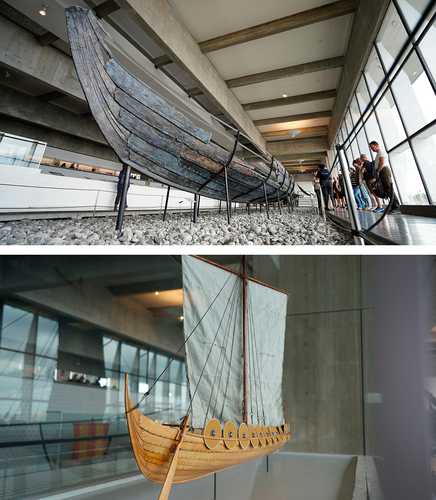Blacksmiths rebuild a Viking ship to decipher its navigation secrets
Roskilde. In front of a fjord in the heart of Denmark, a team of blacksmiths helps rebuild a Viking ship to decipher the ancient navigation secrets of these Norse warriors.
A team from the UK’s National Blacksmithing School helps rebuild the Skuldelev 5, 17 meter long warship whose remains are exhibited in the Roskilde Museum.
We explore the techniques of that time as much as possible
says Professor Rowan Taylor, as his students carve the iron for the anchor.
According to archaeologists, the ship was part of a war fleet. She was found along with three other boats in the Roskilde Fjord in 1962, almost a thousand years after being shipwrecked while she was trying to protect the entrance to the city from invaders.
Half of its oak hull survived, but its anchor did not suffer the same fate, so it must be rebuilt based on another from the same period.
The model, found in Ladby, in the center of the country, measures 1.26 meters long by 0.83 meters wide, and is connected to the hull with an 11 meter long chain.
They had less access to resources than we did. This shows their capabilities.
explains Michael Phillips, a 28-year-old student.
Once finished, the new anchor will be suspended to the new version of the Skuldelev 5”, which should be ready in 2028.
▲ A team of students from the UK’s National Blacksmithing School helps rebuild the ship Skuldelev 5. Afp’s photo
Since the 1980s, the Viking Ship Museum in Roskilde has been exhibiting and restoring ships from the period using experimental archeology techniques.
According to specialists, this reconstruction process allows us to acquire a better understanding of that era.
More precisely, reconstructing a Viking ship helps, for example, to evaluate the speed at which these vessels went. It is a way to discover all the secrets that these ships keep
says conservative Triona Sørensen.
When you have them here, in a museum, we can know how old they are, what material they were made with, where they were built, but we have no idea how they really worked, and that is what interests us.
Add.
Between the 9th and 11th centuries, Norse warriors sailed across Europe and North America, plundering, but also carrying out trading expeditions.
Ships are the true driving force of all this expansion in the Viking Age and brought Scandinavia to the European political scene of the time.
underlined Sørensen.
For us, ships are at the heart of the Viking Age
he points out.
